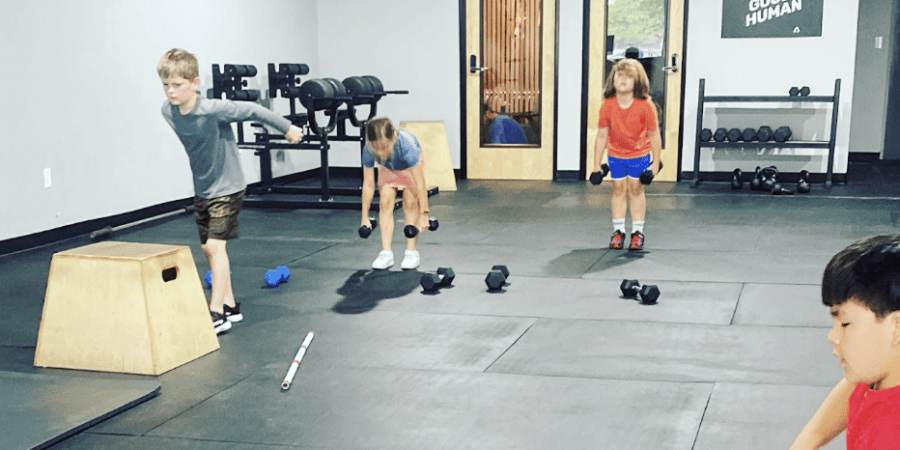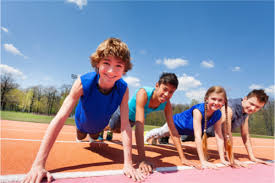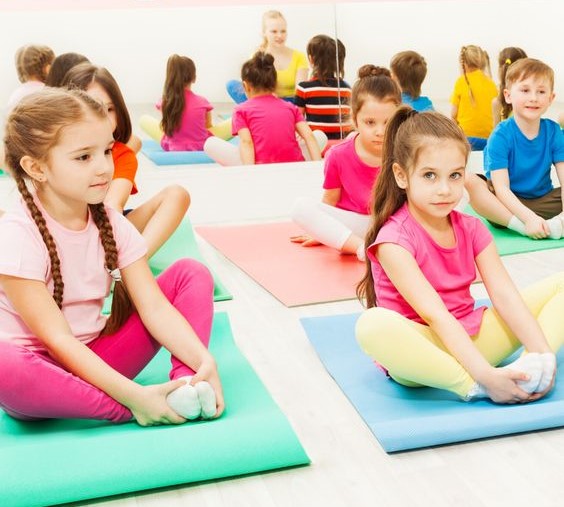Blog
4 problems with P.E. Classes in America
Physical education (P.E.) classes have been part of the education system of most schools in the United States for many decades. I have distinct memories of doing windmills, laying on my belly on rolling carts, beating the boys at chin-ups and arm-hangs, schoolmates holding my feet down while I did as many sit-ups as I could in one minute, and “running the mile” around the periphery of the gym because it was always raining outside. Every time I look back on my P.E. experiences and how they skewed my early views of fitness and female body capability, I feel angry. Sadly, based on what I’m seeing in current P.E. classes, not much has changed, so I think we need to talk about 4 key shortfalls in most PE programming that are still damaging young children… And I’ve also got a horror story that will make your blood boil!
Physical education classes have been an integral part of American schooling for generations now, but unfortunately this staple class has been plagued by numerous issues including low participation rates, oversimplified programming, inappropriate and unsafe exercises, and inadequately trained PE teachers —all factors which lead us away from our ultimate goal: enabling our youth to reach optimal health through enjoyable physical activities.
If we’re serious about reversing our current trend towards disease and obesity among young people, then it’s clear we must make significant changes. All students should have access to quality physical education, experienced professionals, and engaging programs with games and movements tailored appropriately to each age and grade. It’s time for us make sure every student gets an opportunity to maximize their potential through meaningful physical education at home or in school so they have the tools to stay mentally and physically fit for life!
In addition to what I said in the short video above…
Here are 4 key problems I see with most P.E. Classes
- Low Participation Rates: Would you believe that – even though I’m a fit pro – I hated P.E. when I was a schoolgirl. And I wasn’t alone. Not only do most of my friends report hating PE as well, many schools quit offering it as much as I got older.

According to a 2019 survey conducted by the Centers for Disease Control and Prevention, only 46% of high school students participate in physical education classes at least once per week. This is significantly lower than the recommended level of 60 minutes per day, and contributes to an overall decrease in physical activity among American youth. It’s essential for schools to prioritize P.E., ensuring that all students have access and encouraging them to take advantage of this opportunity for healthy living.
2. Lack of Variety in Programming: In addition to low participation rates, another problem with P.E. classes across the country is a lack of variety in programming options available for students who may not enjoy traditional team sports or activities—such as competitive running or basketball—that are often featured heavily in modern curriculums. And can we toss the Presidential Physical Fitness Testing puh-lease?! It’s all very militarized and out of date!!!
If we are serious about promoting healthy behaviors and attitudes towards physical activity among our youth, then we must expand beyond these traditional activities – as cute as these kids doing pushups are – and provide more options and inclusive programs such as yoga or dance that can appeal to students from all backgrounds and interests.

3. Poorly Trained Teachers: Perhaps one of the biggest underlying problems facing P.E. classes today is a lack of properly trained teachers capable of leading engaging and effective sessions on a regular basis. Despite massive growth in the popularity of health and fitness culture over recent years, there has been comparatively little investment made into properly training teachers who can adequately facilitate group exercises, teach proper form when performing movement patterns, and understand how to design effective programs tailored towards individual needs.
Here’s a HORROR story from a client of mine!
If we want our kids to discover a fascination with movement (not shame or over-exhaustion) and find some fitness styles they will enjoy doing throughout the rest of their lives, then it’s imperative that these instructional roles come with proper qualifications and oversight from passionate, qualified professionals with degrees in exercise and sport science, not just English teachers who are pulled in to do P.E. No shade to amazing English teachers.
I’ve got one final point to make, and it’s actually my biggest pet peeve!
4. Inappropriate exercises: Where do I even begin and end with this point when it’s the one that actually provoked this blog in the first place? First, can I ask how we expect teachers without appropriate training to offer appropriate exercises? If you sign up for personal training at a gym, you’re paying for a tailored program that meets your needs. You know that your needs are different than a teenage male athlete’s needs which are different than a sedentary nerdy kid (my son) which are different than a pospartum woman’s.
However, most PE classes are focused on having whole classes of kids meet benchmarks that aren’t tailored to their individual physical limitations or strengths at all! And don’t get me started on the “Presidential Physical Fitness Test,” it’s military roots, and it’s sexist messaging towards girls and pull-ups and pushups. I am grateful to our military members, but young kids don’t need military level testing. Also, sit-ups are awful… read more about that here.
Letter excusing kids from sit-upsWe now understand that crunches and sit ups can sometimes do more harm than good, especially when they’re cranked out with incorrect technique. We need to reshape how we seek to train the cores of our students and clients if we are to play our part in stopping the downward cycle of poor alignment, abdominal separation, stress incontinence, chronic lower back pain, and total debilitation that are occurring at shocking levels in our society today.
Here on Fit2B we offer amazing, crunch-free + sit-up free workouts for grownups and kids. We still work your core, but we do it in a thousand, better, more fun ways!
Our Kids workouts Explore Fit2B MembershipHave some thoughts On P.E. classes for kids?
Do you see issues I haven’t mentioned? Have you run into a P.E. teacher who was unqualified and/or pushing exercises that hurt your child? What do you think modern day physical education classes are missing? How can we improve them? Can we do better at home? Do kids even need P.E. with all the sports available? I think kids need to be able to try it all WITHOUT shame or arbitrary benchmarks, but I’d love to hear any thoughts you care to share on this topic, and don’t forget to share this post!

